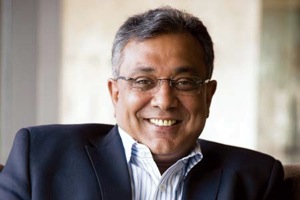
India’s slowing economy and the onset of new supply is dragging down hotel performance. During the first seven months of the year RevPAR decreased 4.3%, ADR dropped 3.9% and occupancy fell 0.4% to 57.4% nationwide, according to STR Global.
However, this is being felt unevenly across the country, with gateway cities suffering while leisure destinations are seeing increased demand as Indians increasingly travel in their home country rather than abroad. To find out more, HOTELS examined how the economic turmoil is affecting the hotel development and performance in the November issue of HOTELS Magazine and also spoke with Starwood Hotels & Resorts Worldwide’s Dilip Puri, managing director India and regional vice president South Asia, Starwood Asia Pacific Hotels & Resorts.
HOTELS: In light of the country’s declining economic growth and currency depreciation, has Starwood’s outlook for India over the year?
Dilip Puri: With the volatile economic environment and the depreciating rupee, the ride for the Indian hospitality sector has been a bumpy one. However, we are cautiously confident about our growth in India in the near term and remain as bullish as ever in the long term. What matters when conditions get tough is our ability to outperform the market, which we have been doing consistently. India makes a very compelling story with its robust growth and massive domestic market. For perspective, we remember that our success in China did not happen overnight. We opened our first hotel, The Great Wall Sheraton in Beijing in 1985. But the real acceleration in growth began only in the middle of the last decade. Today, we have nearly 120 operating hotels in China with another 100 under development, and we expect to reach this point of inflection in India, too.
HOTELS: How is Starwood’s portfolio in India currently performing in terms of ADR, RevPAR and occupancy?
Puri: While economic uncertainty around the globe has not made it an easy ride for hotels, we continue to get more than our fair share of travelers with our focus on brands, innovation and loyalty beyond reason. The reality of the hospitality sector is that demand fluctuates with business activity and consumer confidence, but we’ve worked hard to make Starwood less vulnerable to changes in business conditions.
While occupancy has more or less remained constant in India, we do find rates under pressure and therefore maintaining ARR has been a challenge in 2013. In addition, many cities have seen an influx of additional inventory. We’ve seen this in a city like Chennai, which has added further pressure on rates. However, we’ve had the benefit of a global loyalty program, Starwood Preferred Guest, which fills 50% of our rooms.
A strategy that has worked well for us and helped us weather the economic crisis is to substitute traditional source markets with newer markets to our hotels in India. For example, if Europeans are traveling less, we target guests from Hong Kong, Singapore and other parts of Asia Pacific. Shifting focus to these markets has helped, as has the falling rupee, which makes us a cheaper destination for inbound travel. Domestic travel has also increased as more and more people are looking for alternatives within India.
HOTELS: What is Starwood’s pipeline for India and how is the current economic and currency situation affecting this? Which brands are in the pipeline?
Puri: We currently operate 37 hotels under six of our nine brands with 34 hotels under development. We are well on track to achieve our target of 100 hotels operating, under development or management contracts signed by 2015. India is Starwood’s fourth largest market and will soon be its third. Starwood is also all geared up to bring its luxury brands St. Regis Hotels & Resorts and W Hotels & Resorts to India with one St Regis and four W Hotels currently under development. After those openings, Starwood will have eight of its nine brands flying their flag in India.
HOTELS: What is the ownership/management arrangement for them?
Puri: Out of the operating hotels we have 10 Luxury Collection and 2 Sheratons operating under a franchise arrangement with ITC and 5 Alofts, 4 Four Points by Sheraton and two Le Méridiens currently operating are also franchised. The others are managed by us. Our preferred strategy going forward is to manage more hotels and to consider franchising only the upscale brands should there be a portfolio opportunity.
